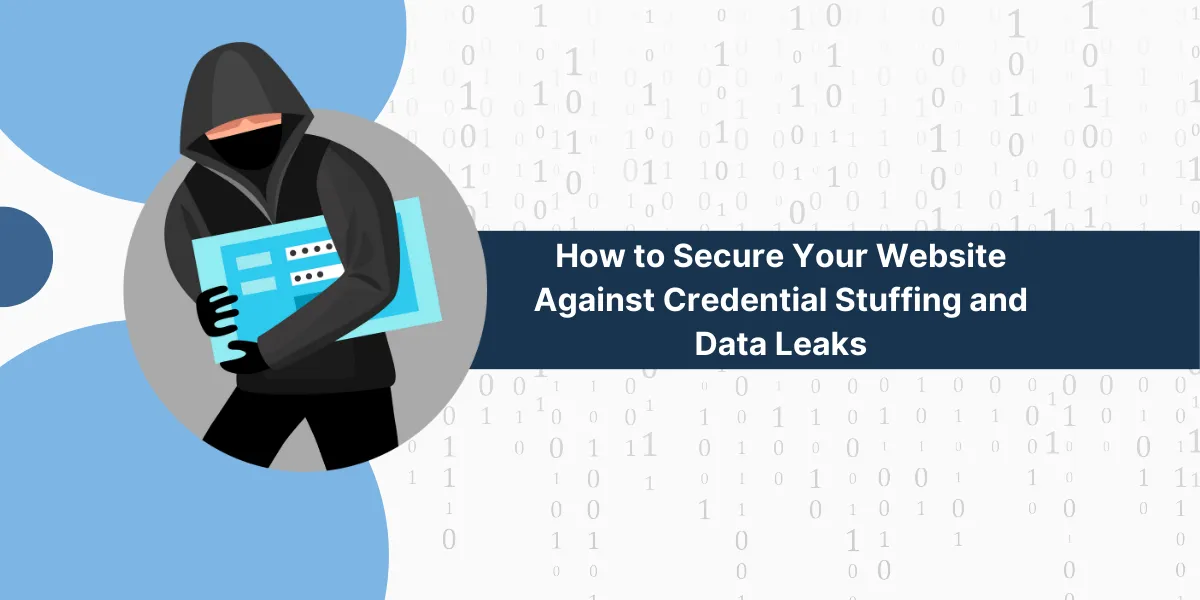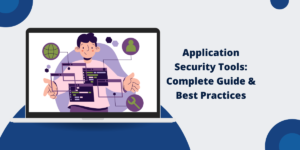Cybercriminals are continuously evolving their attack methods, and credential stuffing is one of the most rampant threats facing businesses and individuals alike. According to Verizon’s 2024 Data Breach Investigations Report, over 80% of hacking-related breaches are due to compromised credentials.
In an era where data leaks and password breaches have become commonplace, securing your website against such attacks is critical. These breaches not only compromise user accounts but can also result in financial losses, reputational damage, and regulatory fines. This article delves into credential stuffing, why it’s a major cybersecurity threat and actionable measures to mitigate its risks effectively.
What is Credential Stuffing?
Credential stuffing is a type of cyberattack in which hackers use stolen usernames and passwords (often obtained from past data breaches) to gain unauthorized access to user accounts on various platforms. Unlike brute force attacks that try to guess passwords, credential stuffing relies on many users reusing passwords across multiple sites. This exploit takes advantage of human behavior, where convenience often overrides security best practices.
How Credential Stuffing Works?
- Data Acquisition: Attackers obtain stolen login credentials from data dumps available on the dark web. These credentials come from previous security breaches and are often sold in bulk.
- Automated Login Attempts: Hackers use botnets and automation tools to systematically test the stolen credentials on multiple websites, bypassing simple security mechanisms.
- Account Takeover: If users have reused passwords across multiple platforms, attackers gain access and can exploit accounts for fraud, identity theft, or even further breaches into corporate systems.
Why is Credential Stuffing a Serious Threat?
- High Success Rate: Due to the widespread reuse of passwords, even a 1% success rate can result in thousands of compromised accounts, making it a low-effort yet high-reward attack for cybercriminals.
- Automated Attacks at Scale: Cybercriminals deploy sophisticated bots capable of testing millions of credential pairs in a short period, making manual detection nearly impossible.
- Major Data Breaches: Reports from Have I Been Pwned (HIBP) reveal billions of credentials available online due to data breaches at companies like LinkedIn, Facebook, and Yahoo, proving that no industry is immune to these attacks.
Real-World Credential Stuffing Attacks
- 2019: Disney+ Account Takeover: Thousands of user accounts were hijacked within hours of the streaming service’s launch, demonstrating how quickly credential stuffing attacks can be executed.
- 2022: Norton LifeLock Breach: Attackers used credential stuffing to access over 925,000 user accounts, leading to financial fraud and identity theft.
- 2023: GitHub Attack: A sophisticated credential stuffing campaign targeted GitHub repositories, compromising codebases and exposing proprietary information.
How to Secure Your Website Against Credential Stuffing
- Implement Multi-Factor Authentication (MFA)
- Enforce Strong Password Policies
- Deploy Rate Limiting & IP Blacklisting
- Implement CAPTCHA Challenges
- Monitor for Breached Credentials (Credential Screening)
- Educate Users on Password Hygiene
- Encourage Use of Password Managers
- Detect and Block Automated Bots
- Use Secure Authentication Methods
- Regularly Audit & Update Security Measures
1. Implement Multi-Factor Authentication (MFA)
Multi-factor authentication (MFA) adds an extra layer of security by requiring users to verify their identity using a one-time passcode (OTP), biometric authentication, or authentication apps. Even if credentials are compromised, MFA can block unauthorized access attempts.
Expert Insight: According to Microsoft Security Blog, MFA can prevent 99.9% of automated attacks, making it one of the most effective defenses against credential stuffing.
2. Enforce Strong Password Policies
Encourage users to create unique and complex passwords by implementing:
- Minimum 12-character passwords
- Combination of letters, numbers, and symbols
- No dictionary words or sequential numbers
- Regular password changes and security prompts
3. Deploy Rate Limiting & IP Blacklisting
Rate limiting restricts the number of login attempts from a single IP address, mitigating bot-driven credential-stuffing attacks. Advanced Web Application Firewalls (WAFs) can help detect and block suspicious activity in real-time.
4. Implement CAPTCHA Challenges
Adding reCAPTCHA or other challenge-response tests can prevent automated bots from bombarding your login forms with credential stuffing attempts. These mechanisms force attackers to invest additional time and effort, often making automated attacks ineffective.
5. Monitor for Breached Credentials (Credential Screening)
Integrate real-time breach detection APIs like Have I Been Pwned’s API to cross-check users’ login credentials against known data breaches, alerting them to compromised accounts and prompting password changes.
Pro Tip: Companies like Google and Apple now notify users when their passwords appear in data breaches, helping them take immediate action to secure their accounts.
6. Educate Users on Password Hygiene
Stats: A study by LastPass Password Security Report 2024 found that 65% of people reuse passwords across multiple sites. Educating users through security awareness training can significantly reduce credential reuse and mitigate attack risks.
7. Encourage Use of Password Managers
Tools like 1Password, Bitwarden, and LastPass help users generate and store strong, unique passwords without the burden of remembering them, drastically improving account security.
8. Detect and Block Automated Bots
Deploy bot detection solutions such as:
- Cloudflare Bot Management
- Akamai Bot Manager
- Imperva Advanced Bot Protection
These tools analyze traffic patterns and behavior to differentiate between humans and bots, reducing the risk of automated credential stuffing attacks.
9. Use Secure Authentication Methods
Replace traditional passwords with modern passwordless authentication methods like:
- WebAuthn & FIDO2 authentication
- Magic link sign-ins
- Biometric authentication (fingerprint/Face ID), eliminating the need for passwords.
10. Regularly Audit & Update Security Measures
Conduct penetration testing and security audits to identify vulnerabilities in your authentication system. Keep software and security patches up to date to stay ahead of evolving threats.
Final Thoughts: Why Choose Varda Security System?
Credential stuffing and data leaks pose a serious cybersecurity risk, but with the right defenses, organizations can significantly mitigate the threat. By implementing multi-factor authentication, password policies, bot detection, and security monitoring, businesses can safeguard user accounts and sensitive data.
Cybersecurity is a continuous process—staying informed, adopting best practices, and proactively addressing risks is the best way to protect against evolving threats.

Priya Mervana
 Verified Web Security Experts
Verified Web Security Experts
Priya Mervana is working at SSLInsights.com as a web security expert with over 10 years of experience writing about encryption, SSL certificates, and online privacy. She aims to make complex security topics easily understandable for everyday internet users.



